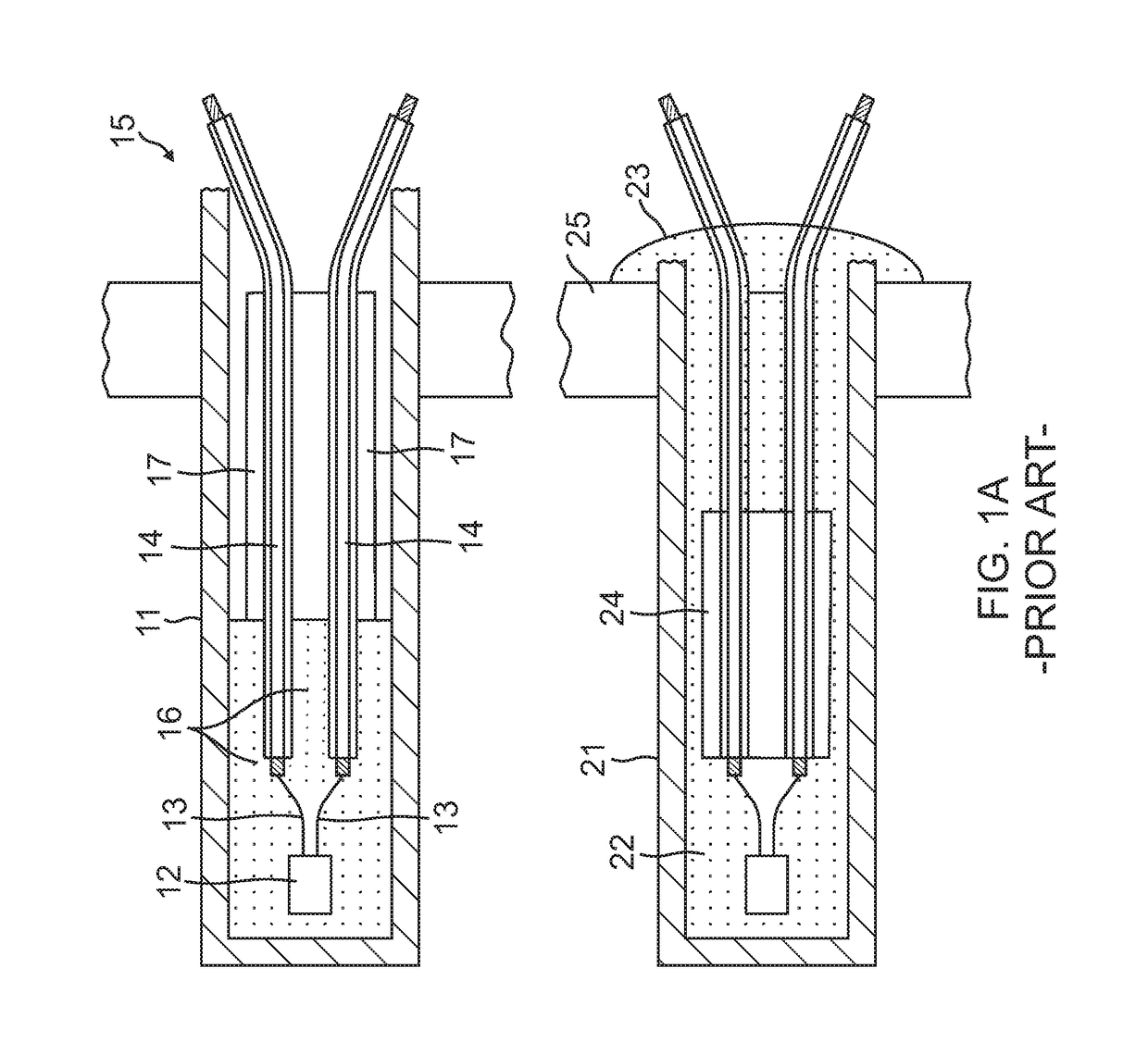Thermal dispersion mass flow rate, material interface, and liquid level sensing transducer
a transducer and mass flow rate technology, applied in the field of thermodynamic and highly precise sensing transducers, can solve the problems of potting material in the transducer as a source of problems, unpredictable changes in heat transfer characteristics of the sensor, and air bubbles are often entrapped, so as to achieve no variation in output with time
- Summary
- Abstract
- Description
- Claims
- Application Information
AI Technical Summary
Benefits of technology
Problems solved by technology
Method used
Image
Examples
Embodiment Construction
[0019]A purpose of the disclosed embodiments is to control the heat transfer paths in thermal wells. Such control includes eliminating the need for potting of the RTD element or pressure forming the containing thermal wells. Additionally, the present concept substitutes a precision unchanging reproducibility thermal path between the RTD and the mounting surface of the thermal well in which the RTD is mounted. The precision, reproducible, and unchanging heat transfer path of the structure disclosed provides for high fidelity and consistent performance under all likely hostile service conditions so far as accurate, durable, and reproducible gas or fluid mass flow rate output, liquid level sensing, and interface sensing to and between non-miscible liquids and on non-liquids and slurries is concerned. For convenience, the concept of flowing fluid will be used herein, with the understanding that the structure applies equally to liquid level, non-miscible liquid interface sensing, and non...
PUM
 Login to View More
Login to View More Abstract
Description
Claims
Application Information
 Login to View More
Login to View More - R&D
- Intellectual Property
- Life Sciences
- Materials
- Tech Scout
- Unparalleled Data Quality
- Higher Quality Content
- 60% Fewer Hallucinations
Browse by: Latest US Patents, China's latest patents, Technical Efficacy Thesaurus, Application Domain, Technology Topic, Popular Technical Reports.
© 2025 PatSnap. All rights reserved.Legal|Privacy policy|Modern Slavery Act Transparency Statement|Sitemap|About US| Contact US: help@patsnap.com



